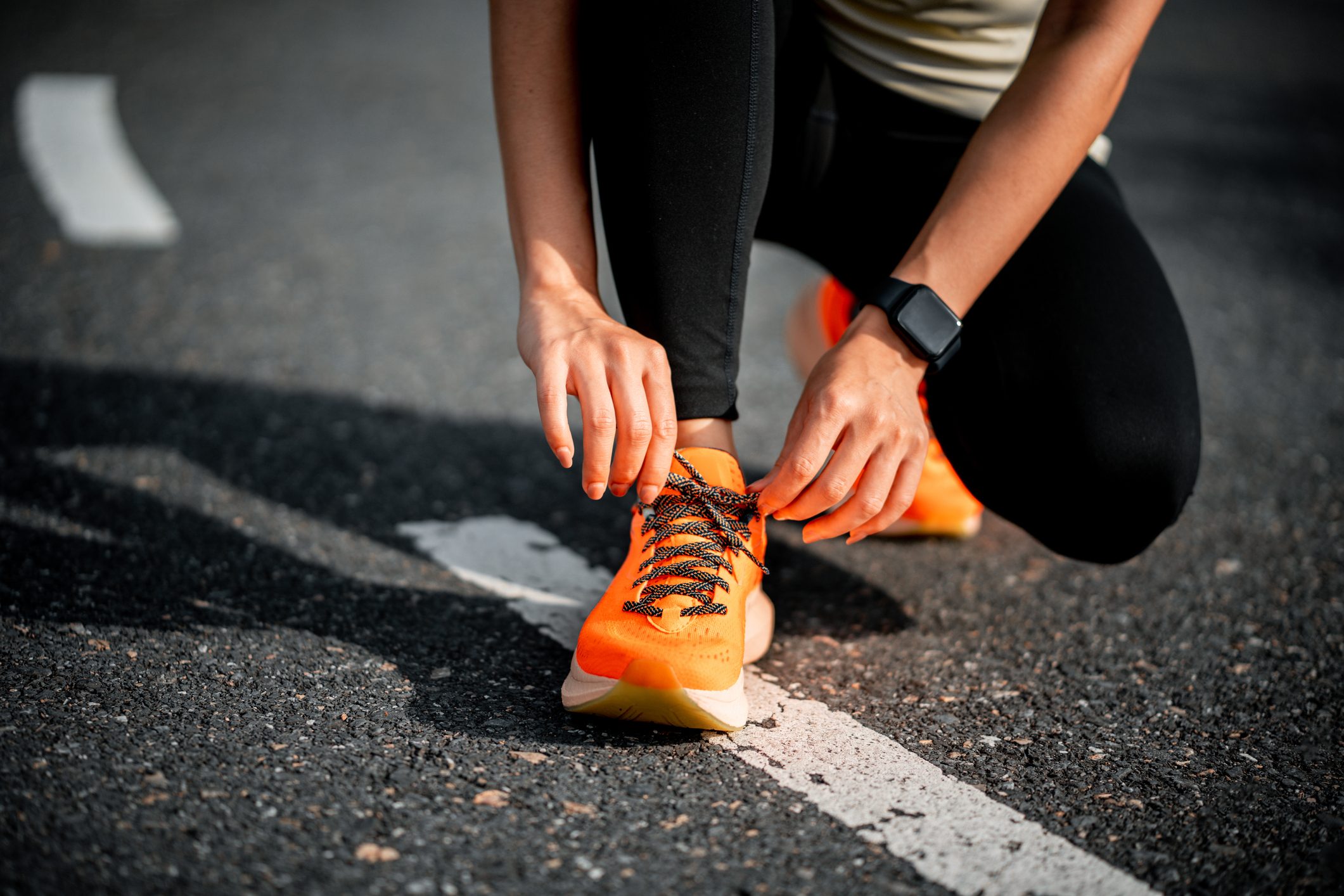Whether you're the one to beat or in it just to finish, a certified trainer offers a formula for identifying your right pace.

Here’s How Fast You Should Be Able To Run, Says One Expert

About the expert
|
Before you know it, the cool fall air will be here again—and with it, the opportunity to exercise outside without feeling baked and basted. Running’s an old-school activity that calls for little besides good shoes and motivation: Market research firm Statista notes that an estimated 50 million Americans still run or jog, with many having personal goals of completing a 5K, 10K, or marathon.
If you’ve ever wondered how fast you should be able to run, there are a few key ways to find the right speed while avoiding overtraining, injuries, or premature burnout. “We all start somewhere,” says Zack Dzingle, an ACE certified personal trainer and general manager at The Bay Club, a West Coast chain of gyms with locations in Oregon, Washington, the San Francisco Bay, and Southern California. “Whether it’s a distance-based goal or for body composition, a slow build-up into higher paced and longer runs [is] essential.”
For someone taking up running for the first time, Dzingle recommends starting with a walking pace on the treadmill that you can sustain for a longer period, around 10 minutes. “In most cases, this is 2.5 to 3.5 miles per hour,” he says, noting you’ll hit a mile in 20 minutes if you’re walking at three miles per hour on a treadmill.
Next, Dzingle recommends doing prolonged intervals of walking and jogging, such as walking for five minutes before jogging for two minutes, then building from there. “As you progress, you can start figuring out where you can start running a mile nonstop,” Dzingle says. “This is where I would start paying attention to where your RPE—rate of perceived exertion—and heart rate are.”
Rate of perceived exertion, explains Dzingle, is a scale—ranging from 1 to 10—used to gauge how difficult a certain activity is. He says a 1 on the scale is “the feeling of at rest” while a 10 equals “the hardest thing you have ever done and need to stop.” “If training yourself up for a longer run like a half or full marathon, you need to find the point where you are at a 4 or 5 for the starting miles,” he says. “That is around the pace you need to be at. These mile times will vary depending on where your cardiovascular level is at in your training.”
If you wear a heart rate monitor, Dzingle recommends measuring your running paces based on zones, specifically the 80/20 rule. He explains, “Eighty percent of your running should be in zone 1—50 to 60% of your heart rate max—and 20% can be used moving in and out zones 2 to 5, with 5 being maximal effort.”
The Cleveland Clinic notes there are five heart rate zones, which are “based on a percentage of your maximum heart rate.”
Dzingle adds that you should always bring your heart rate back down to lower zones between intervals or hills. He shares a 40-minute interval session he likes to do:
6.0 mph (10 min) – 4.0 mph (5 min) – 6.0 mph (10 min) – 4.0 mph (5 min) – 6.0 mph (10 min)
Using your rate of perceived exertion and heart rate as guides, he says you can start to get an idea of what your set point running pace should be. “Continue to always monitor how hard each mile is and start to progress those run-walk prolonged intervals,” he adds.
Once you get into a running groove, it’s exciting when you start to feel enthusiasm take over. Just don’t overdo it. Dzingle recommends staying vigilant for signs of overtraining, which can include:
- Decreased performance
- Increased muscle soreness
- Sleep disturbances
- Persistent fatigue
- Elevated resting heart rate
- Mood changes
- Increased susceptibility to illness
“This is why it is vital to start slow and build from there,” he says. “This starting point will vary case by case.”
Dzingle offers a final word of encouragement: “Keep the body moving—and remember small victories are huge.” Metaphorically, he says, “Running is absolutely a marathon and not a sprint. Ramp up your intervals to let your body get used to this activity and you are set up for success.”
For daily wellness updates, subscribe to The Healthy by Reader’s Digest newsletter and follow The Healthy on Facebook and Instagram. Keep reading:
- Want a Healthier Heart? Exercise at This Hour, Says New Research
- If You Don’t Walk Backward Every Day, a Sports Medicine Doctor’s List of the Benefits Might Convince You To Start
- Research: This Many Minutes of Walking Daily May Cut Cardiac Death Risk Up to 60% for a Large Group
- Being Active For Just This Long Can Reduce Cardiovascular Risk



















